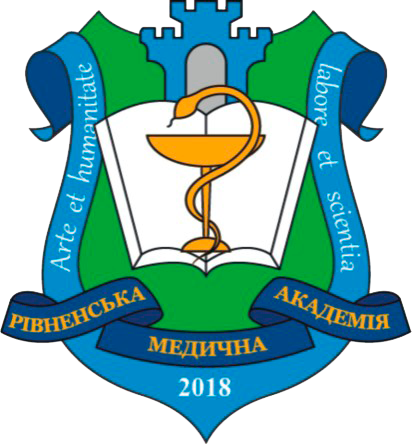ACTIVITIES OF DAILY LIVING IN CHILDREN: THEORETICAL PERSPECTIVES IN OCCUPATIONAL THERAPY
DOI:
https://doi.org/10.32782/health-2025.1.19Keywords:
rehabilitation, occupational therapy, school environment, occupational therapy services, quality of life, recovery, independence, self-care, occupational participation, activities of daily livingAbstract
Background: Cerebral palsy (CP) is a leading cause of childhood disability, affecting 1 in 500 newborns globally.Hemiparesis, a common form of CP, limits upper limb function and impacts activities of daily living (ADL). Constraint- induced movement therapy (CIMT) is a proven intervention for improving motor function, promoting greater independence.This study evaluates the effectiveness of modified CIMT (mCIMT) in enhancing hand function and ADL performance in children with unilateral CP.Methods: A systematic review was conducted to analyze mCIMT protocols, focusing on therapy duration, immobilization methods, and age-related outcomes. Key indicators assessed included motor improvements, ADL proficiency, and quality of life.Results: mCIMT significantly improves ADL performance, enhancing self-care skills, grasping function, and bimanual coordination. Recent studies (e.g., Tanabe et al., 2025; Reidy et al., 2023) show notable gains in PDMS-2, PEDI, and PMAL scores (p < 0.01) in children 6–8 years old, with a threefold increase in affected hand use. Hybrid and home-based CIMT models demonstrate comparable efficacy to clinic-based interventions, improving therapy accessibility.Discussion: Research suggests that mCIMT, especially when combined with bimanual training, leads to superior outcomes. Higher therapy doses and shaping techniques are particularly beneficial for older children. Task-oriented and engaging rehabilitation strategies enhance participation and motivation, maximizing treatment benefits.Conclusion: mCIMT is a highly effective rehabilitation method, improving ADL, upper limb function, and independence in children with CP. Further research is needed to standardize intervention protocols and explore long-term effects, ensuring sustained improvements and broader therapy accessibility.
References
Олександр Кущенко, Володимир Вітомський, Олена Лазарєва, Марина Вітомська. Засоби ерготерапії в підвищенні рівня функціонування та незалежності дітей із церебральним паралічем. Молодіжний науковий вісник Східноєвропейського національного університету імені Лесі Українки [Internet]. 2017 [cited 2025 Feb 8];(26):94–102. Available from: https://www.sportvisnyk.vnu.edu.ua/index.php/sportvisnyk/article/view/187
Oskoui M, Coutinho F, Dykeman J, Jetté N, Pringsheim T. An update on the prevalence of cerebral palsy: a systematic review and meta-analysis. Developmental Medicine & Child Neurology. 2013 Jan 24;55(6):509–19.
Hallman-Cooper JL, Gossman W. Cerebral Palsy [Internet]. PubMed. Treasure Island (FL): StatPearls Publishing; 2024. Available from: https://www.ncbi.nlm.nih.gov/books/NBK538147/. PMID: 30844174
Morgan C, Fahey M, Roy B, Novak I. Diagnosing cerebral palsy in full-term infants. Journal of Paediatrics and Child Health. 2018 Oct;54(10):1159–64.
Jamali, A. R., & Amini, M. (2018). The Effects of Constraint-Induced Movement Therapy on Functions of Cerebral Palsy Children. Iranian journal of child neurology, 12(4), 16–27.
Hoare, B. J., Wallen, M. A., Thorley, M. N., Jackman, M. L., Carey, L. M., & Imms, C. (2019). Constraint-induced movement therapy in children with unilateral cerebral palsy. The Cochrane database of systematic reviews, 4(4), CD004149. https://doi.org/10.1002/14651858.CD004149.pub3
Novak I, Morgan C, Fahey M, Finch-Edmondson M, Galea C, Hines A, et al. State of the Evidence Traffic Lights 2019: Systematic Review of Interventions for Preventing and Treating Children with Cerebral Palsy. Current Neurology and Neuroscience Reports [Internet]. 2020 Feb;20(2). Available from: https://pubmed.ncbi.nlm.nih.gov/32086598/. DOI: 10.1007/s11910-020-1022-z.
Ramey SL, DeLuca SC, Stevenson RD, Conaway M, Darragh AR, Lo W. Constraint-Induced Movement Therapy for Cerebral Palsy: A Randomized Trial. Pediatrics. 2021 Oct 14;148(5):e2020033878. Doi: 10.1542/peds.2020-033878.
Tanabe, S., Yamamoto, T., Suzuki, K., Nakamura, H., & Watanabe, Y. (2025). Evaluation of effectiveness of modified pediatric constraint-induced movement therapy performed on children with cerebral palsy by a home-treatment program. Asian Journal of Rehabilitation Medicine, 14(1), 23–35. https://www.ajrms.com/articles/Evaluation%20of %20 Effectiveness%20of%20Modified%20Pediatric%20Constraint-Induced%20Movement%20Therapy%20Performed%20on%20Children%20with %20Cerebral%20Palsy%20by%20a%20Home-Treatment%20Program
Reidy, T. G., Andrejow, N. W., Naber, E., & Carney, J. (2023). Hybrid telehealth pediatric constraint-induced movement therapy compared to in-person intervention: A case series. International Journal of Telerehabilitation, 15(2). https://doi.org/10.5195/ijt.2023.6567
Christmas, P. M., Sackley, C., Feltham, M. G., & Cummins, C. (2018). A randomized controlled trial to compare two methods of constraint-induced movement therapy to improve functional ability in the affected upper limb in pre- school children with hemiplegic cerebral palsy: CATCH TRIAL. Clinical Rehabilitation, 32(12), 1541–1551. https://doi. org/10.1177/0269215518763512
Dihidar, N., Sarma, B. C., & Baidya, S. (2024). Effectiveness of constraint-induced movement therapy on hand function in cerebral palsy children: A narrative review. Journal of Clinical and Diagnostic Research, 18(7), YE01-YE05. https://doi.org/10.7860/JCDR/2024/67954.19572
Bansal, A., & Diwan, S. (2021). Effect of modified constraint induced movement therapy and hand arm bimanual intensive training on upper extremity skills and functional performance in children with spastic hemiplegic cerebral palsy. International Journal of Health Sciences and Research, 11(2), 32–43. Retrieved from www.ijhsr.org
Roberts, H., Shierk, A., Alfonso, A. J., Yeatts, P., DeJong, T. L., Clegg, N. J., Baldwin, D., & Delgado, M. R. (2022). Improved hand function in children with cerebral palsy with repeat doses of group-based hybrid pediatric constraint-induced movement therapy. Disabilities, 2(2), 365–378. https://doi.org/10.3390/disabilities2020026
Gordon A. M. (2011). To constrain or not to constrain, and other stories of intensive upper extremity training for children with unilateral cerebral palsy. Developmental medicine and child neurology, 53 Suppl 4, 56–61. https://doi.org/10.1111/j.1469-8749.2011.04066.x
Мамотенко АВ. Особливості психічного розвитку дітей з церебральним паралічем. Science, theory and ways to improve methods. Abstracts of XVII International Scientific and Practical Conference, London, Great Britain. 2023 May 1-3:46–50. URL: https://eu-conf.com/events/science-theory-and-ways-to-improve-methods/





